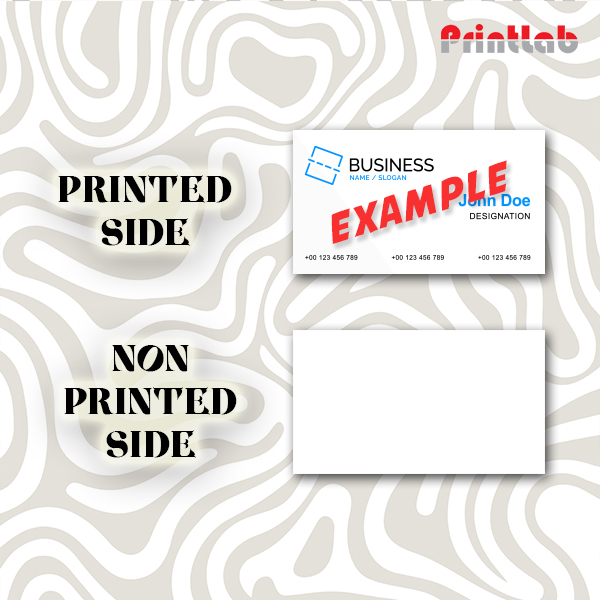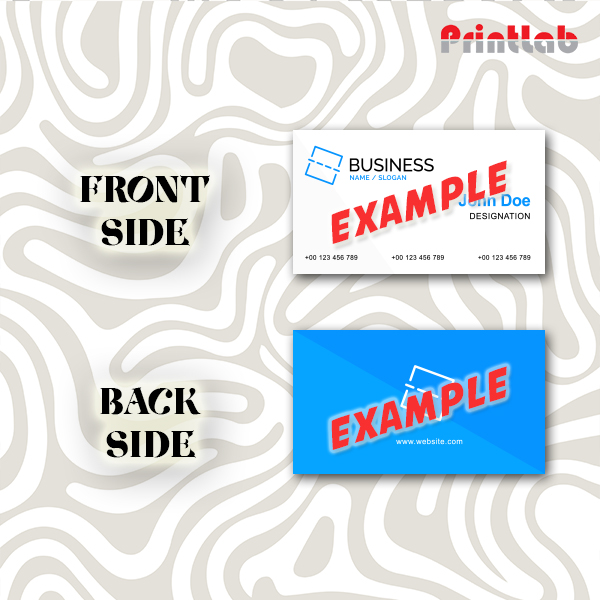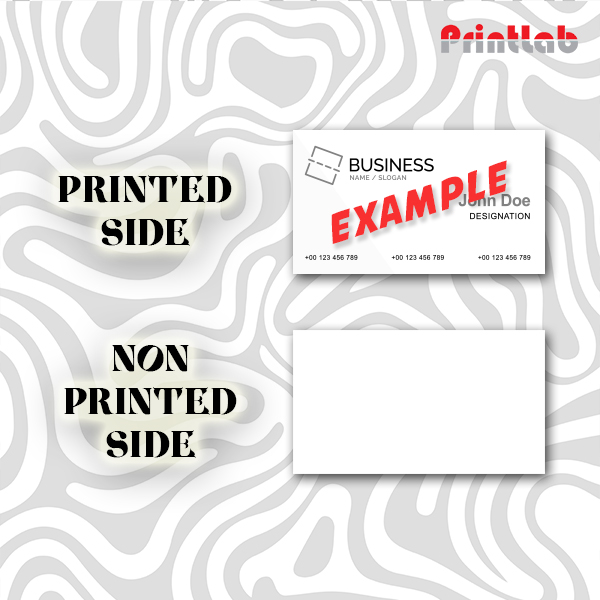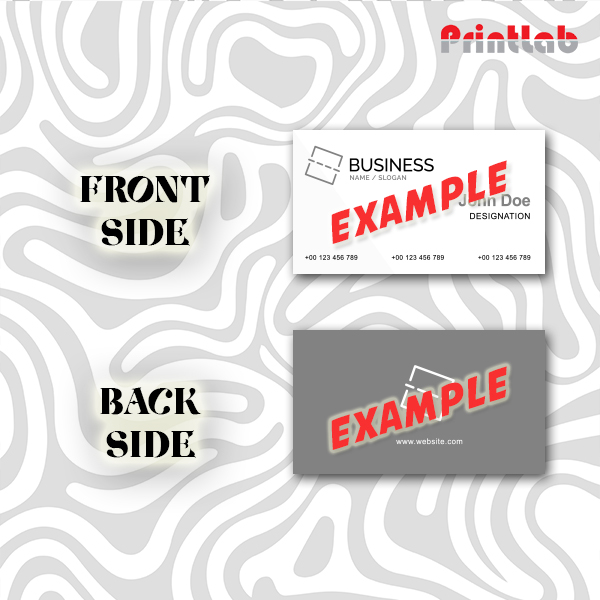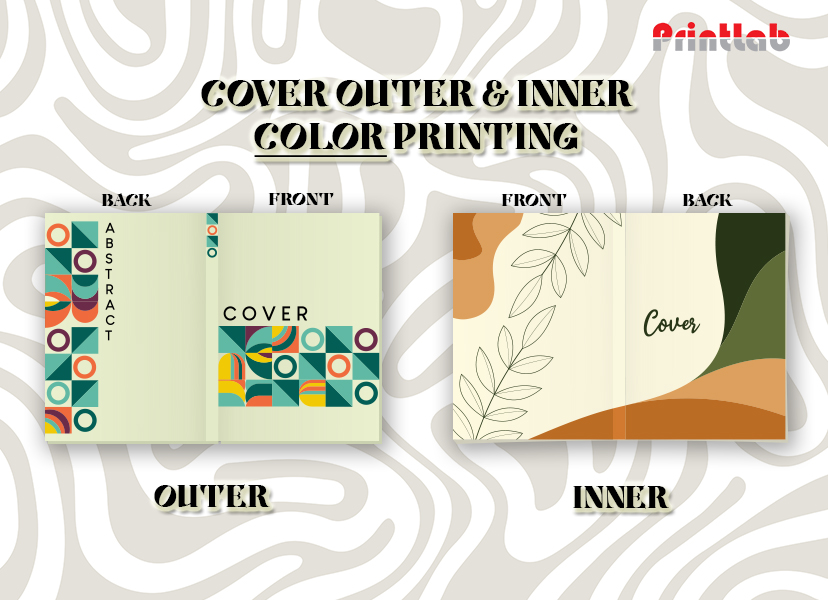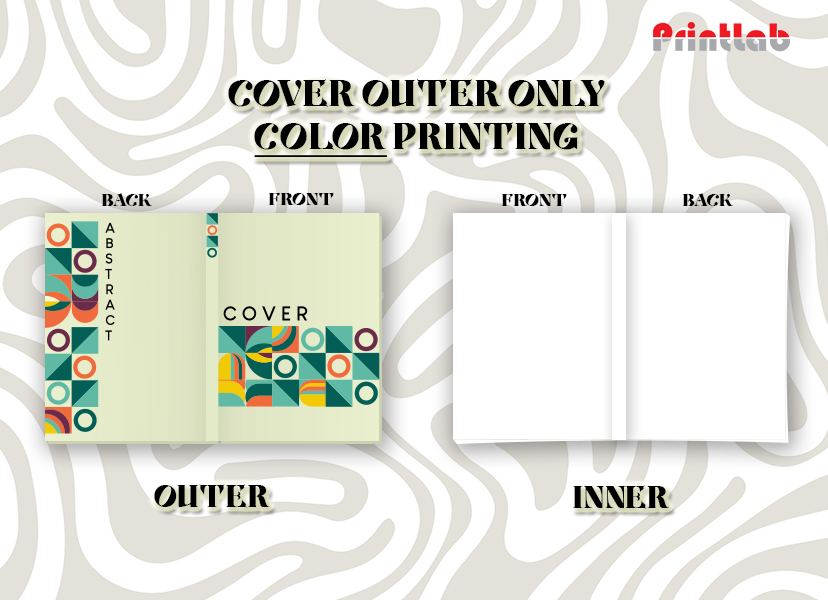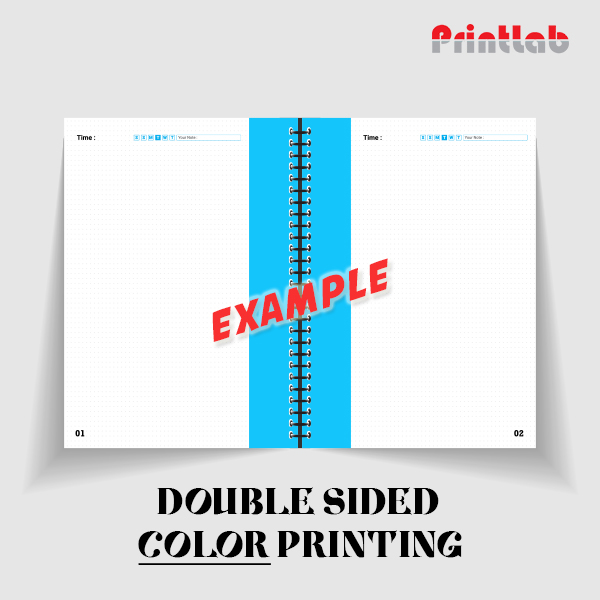Printing Side
COLOR 4C (ONE SIDED)
| One-sided printing with color refers to the process of printing content on only one side of a sheet of paper while utilizing color ink or toner for the printed material. This means that the printer applies color ink or toner to only one side of the paper, leaving the other side blank. One-sided printing with color is commonly used for documents such as brochures, flyers, posters, presentations, and marketing materials where vibrant colors are desired to enhance visual appeal. It allows for the creation of eye-catching and professionally designed documents while still maintaining simplicity in printing on just one side of the paper.
|
COLOR 4C (DOUBLE SIDED)
|
Double-sided printing with color, also known as duplex printing, involves printing content on both sides of a sheet of paper while utilizing color ink or toner for the printed material. This means that the printer applies color ink or toner to both sides of the paper, allowing for full-color printing on both sides of each sheet. Double-sided printing with color is commonly used for various types of documents, including reports, presentations, brochures, flyers, and marketing materials. It offers several benefits, including reduced paper usage, lower printing costs, and environmental conservation by minimizing paper waste. Additionally, it allows for more compact and professional-looking documents, as information can be presented in a concise and organized manner across both sides of the paper. Many modern printers support automatic duplex printing, which can efficiently print on both sides of the paper without requiring manual intervention. |
BLACK 1C (ONE SIDED)
|
One-sided printing with black color only, also known as monochrome printing or grayscale printing, involves printing content on only one side of a sheet of paper using black ink or toner. This means that the printer applies black ink or toner to one side of the paper while leaving the other side blank. Monochrome printing with black color only is commonly used for various types of documents, including text-based documents, forms, reports, memos, and drafts. It is often preferred when printing documents that do not require color, such as documents containing only text or simple graphics. Monochrome printing offers several advantages, including faster printing speeds, lower printing costs (since black ink or toner is typically less expensive than color ink or toner), and the ability to create documents with a professional appearance. Additionally, monochrome printing can help conserve color ink or toner for situations where color printing is necessary or desired. |
BLACK 1C (DOUBLE SIDED)
|
Double-sided printing with black color only, also known as duplex monochrome printing, involves printing content on both sides of a sheet of paper using only black ink or toner. This means that the printer applies black ink or toner to both sides of the paper, allowing for the creation of double-sided documents with black-only content. Duplex monochrome printing is commonly used for various types of documents, such as reports, manuscripts, academic papers, legal documents, and internal memos, where color is not required or desired. It offers several benefits, including reduced paper usage, lower printing costs (as black ink or toner is typically less expensive than color), and improved document organization and readability. Many modern printers support automatic duplex printing with monochrome capabilities, allowing users to print double-sided documents efficiently without manual intervention. This feature is particularly useful in environments where efficiency, cost-effectiveness, and environmental sustainability are priorities.
|
test
Booklet Printing COVER COLOR 4C (OUTER & INNER)
| In cover printing, particularly for books or publications, "outer" and "inner" colors refer to the colors used on the exterior and interior surfaces of the cover respectively.
Both outer and inner colors are important considerations in cover printing, as they contribute to the visual appeal and overall impression of the publication. They can be used creatively to convey a certain mood, tone, or message to the reader, and careful selection of colors can greatly impact the attractiveness and effectiveness of the cover design.
|
COVER COLOR 4C (OUTER ONLY)
| "Outer only color" for cover printing refers to using color exclusively on the outer surface of the cover, without applying any color to the inner surface. In this approach, the outer surface of the cover is designed and printed with colors to convey the desired visual impact, branding, or aesthetic appeal. This is the part of the cover that is visible when the book is closed and placed on a shelf or table. It can include imagery, text, graphics, or any other elements intended to attract the attention of potential readers or convey information about the content of the publication. The decision to use an outer-only color approach may be influenced by various factors such as budget constraints, design preferences, or printing limitations. It allows for a visually striking cover while potentially reducing printing costs associated with using color on both the outer and inner surfaces. However, it's important to ensure that the design still looks cohesive and appealing when the book is opened and the inner surface is visible, even if it remains uncolored. |
CONTENT COLOR 4C (DOUBLE SIDED)
| Content double-sided color printing refers to the process of printing content on both sides of a sheet of paper using color ink or toner. This means that the printer applies color ink or toner to both sides of the paper, allowing for full-color printing on each side. This method is commonly used for various types of documents, including reports, presentations, brochures, flyers, and marketing materials, where vibrant colors are desired to enhance visual appeal. Printing content in color on both sides of the paper can create professional-looking and visually engaging documents. Content double-sided color printing offers several benefits, including maximizing space utilization on each sheet of paper, reducing paper usage, and presenting information in a visually appealing and cohesive manner. It can be particularly useful for documents that contain images, charts, graphs, or other visual elements that benefit from color printing on both sides. |
CONTENT BLACK 1C (DOUBLE SIDED)
| Content double-sided black-only printing involves printing content on both sides of a sheet of paper using only black ink or toner. This means that the printer applies black ink or toner to both sides of the paper, allowing for the creation of double-sided documents with black-only content. This method is commonly used for various types of documents, such as reports, manuscripts, academic papers, legal documents, and internal memos, where color is not necessary or desired. Printing content in black only on both sides of the paper can create professional-looking documents while conserving ink or toner and reducing printing costs. Content double-sided black-only printing offers several benefits, including maximizing space utilization on each sheet of paper, reducing paper usage, and presenting information in a clear and concise manner without the distraction of color. It is particularly suitable for documents containing primarily text or simple graphics that do not require color printing. |

